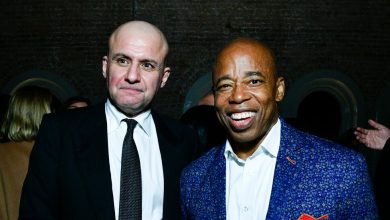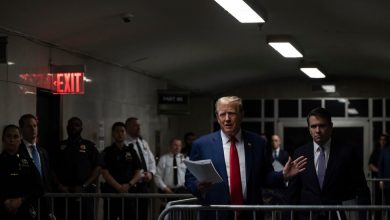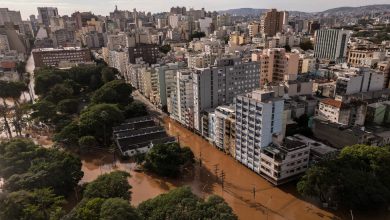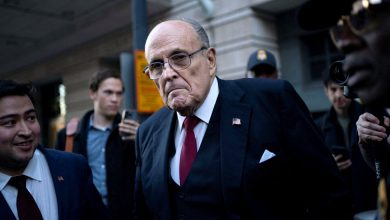Australians’ ‘Golden Ticket’ to the U.S.
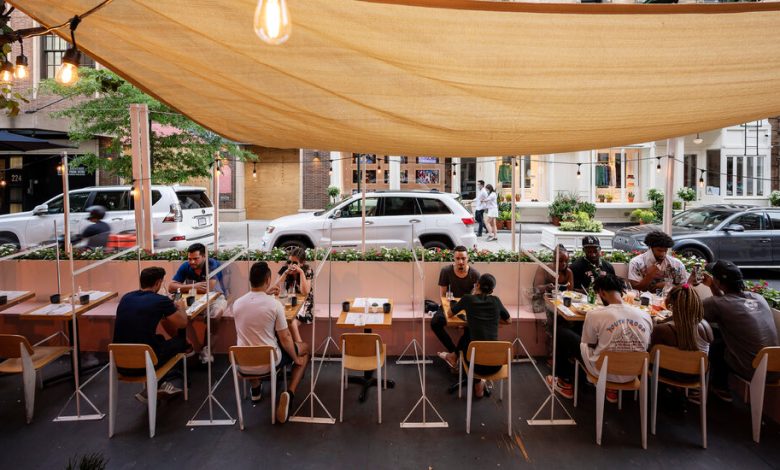
The Australia Letter is a weekly newsletter from our Australia bureau. Sign up to get it by email. This week’s issue is written by Natasha Frost, a reporter based in Melbourne.
When Mete Erdogan, 35, first visited New York City as a tourist more than 10 years ago, he was stunned by the number of fellow Australians who seemed to be thriving there.
“I remember them talking about how easy it was,” he said. “I was so impressed that they made it over there, and were able to make a life for themselves, and rent an apartment, and have a whole setup there.”
In 2013, he made the leap, moving from Melbourne to New York City to seek his fortune as an illustrator, less than a year after graduating from university.
Mr. Erdogan eventually spent nearly five years in the city, mostly working in advertising, before the draw of his family and of an easier, more Australian life brought him back to Melbourne, where he now lives. (His partner, a fellow Australian, also spent multiple years living in the United States.)
These days, Mr. Erdogan looks back on his time in New York with a little wistful nostalgia, but no real desire to return.
“I needed to leave Melbourne in order to consciously choose it,” he said. “Being in a place like New York was a really good way of pulling me out of my life here, and showing me something completely different.”
What made Mr. Erdogan’s stint in New York possible — and those of many Australians like him — is a little-known consequence of the war in Iraq.
In 2005, in what is often perceived as having been a “thank you” for to Australia for its military support, President George W. Bush inaugurated what is known as the E-3 visa — a visa open exclusively to Australians that allows almost anyone with an appropriate job offer and a university degree to relocate to the United States, valid for two years and renewable indefinitely.
The visa is very similar to the H1-B, a much more famous work visa. But where the H1-B is heavily oversubscribed, with a total of 65,000 issued each year across the entire world, there are 10,500 E-3 visas reserved for Australians each year. The quota is typically nowhere near filled. (No equivalent fast-track visa exists for Americans hoping to move to Australia.)
Only after meeting other migrant workers in the United States who were navigating its labyrinthine immigration system did Mr. Erdogan realize the luck involved in being Australian. “It’s such a gift,” he said. “It really is touted as this golden ticket to go anywhere you want.”
The visa has transformed the lives of tens of thousands of Australians. But it also changed New York City, where many of them chose to flock. In 2005, there were fewer than 6,000 Australians in New York, according to a census survey; as of 2020, there were nearly 30,000, with another 25,000 in California, according to estimates from the nonprofit The Australian Community.
Along the way, Australians have inspired changes to New York City’s coffee culture, via the now well-known chains Cafe Grumpy and Bluestone Lane. And their presence has made itself felt. A 2014 article in Gothamist with the headline “What’s The Deal With All These Australians In NYC?” observed: “They’re on the subway, in the beer line at PS1 Warm Up, and holding the elevator for you at your office. Sometimes it feels like Australians are becoming as common in New York as bank branches.”
In an interview with The Times in 2017, Tim Sykes, a co-owner of the Australian restaurant Ruby’s Café in New York City, described a changing climate. “Back when we first got here, everyone used to think we were all Crocodile Dundee with kangaroos in our backyards,” he said. “But now that we’re all over the place, Aussie life is kind of taking hold.”
Before 2006, most Australians in New York City worked for multinational firms that had allowed them to relocate with the company, said James Boland, the founder and president of The Australian Community, who first moved to New York in 1999.
“What the E-3 did is give many Australians who felt like a big fish in a small pond the opportunity to come to America and test their mettle,” he said.
Still, the process of getting a job offer is not always a smooth one. “The 10,500 visas don’t mean 10,500 jobs,” Mr. Boland said. “So when you come over here, you are still competing against the best.”
These concerns are at the heart of objections that some Australians have about proposed changes to the E-3 visa, which would also open the visa up to Irish citizens. Already, Irish citizens apply for J-1 visas — visas commonly given to recent graduates or students — at far greater rates than Australians, suggesting they would take up the opportunity for an easier hop across the Atlantic Ocean with huge enthusiasm.
“There’s only a finite number of jobs for non-United States citizens. That’s just the facts,” Mr. Boland said. “When you’re introducing a massive influx of new job seekers, you know that that’s going to create challenges.”
The plans have bipartisan support, and Mr. Boland believes they are likely to be passed into law next year ahead of the United States presidential election.
“Australia has earned this visa through loyalty, through literally blood, sweat and tears, and then another country is leveraging its political influence to get the government to give its nationals access to that visa,” he said. “It’s not necessarily my opinion, but there’s a lot of people for whom that doesn’t sit well.”
Here are the week’s stories.
Australia and New Zealand
-
Object Found on Australian Beach Is a Mystery No More.A cylindrical object that was found in remote Western Australia probably came from an Indian rocket, Australia’s space agency said.
-
Australia Will Return Looted Sculptures to Cambodia.Three centuries-old Buddhist sculptures were taken from a rural area in Cambodia nearly 30 years ago and sold to the National Gallery of Australia.
-
David Hallberg’s New Job: Decision Maker. The former American Ballet Theater star now leads the Australian Ballet. “When I am faced with difficulties, I lean into them,” he said.
-
Australia to Fast-Track Missile Production for U.S. Exports.The announcement of this plan, along with steps to expand joint military exercises, was shadowed by the news of a helicopter crash during one such exercise.
-
Australian TV Deal Has World Cup Viewers Asking: Where Are the Games?When FIFA sold Australia’s World Cup broadcast rights to a streaming service, it made it harder for casual fans to find the matches.
-
Quantum Tech Will Transform National Security. It’s Testing U.S. Alliances Now.A global race to harness the power of atoms for navigation, computing and encryption is pitting concerns over protectionism against the spirit of cooperation.
Around the Times
-
Two Canadians Discover Their Roots at 67.Men who were switched at birth to families of different ethnicities are now questioning who they really are and learning how racial heritage shapes identities.
-
Elon Musk’s Unmatched Power in the Stars.The tech billionaire has become the dominant power in satellite internet technology. The ways he is wielding that influence are raising global alarms.
-
What Is It About Montecito? Trying to understand the allure of a place that’s home to Oprah, the self-exiled royals, a celebrity juicer, Katy Perry’s dad — and the New American Dream.
Are you enjoying our Australia bureau dispatches?
Tell us what you think at [email protected].
Like this email?
Forward it to your friends (they could use a little fresh perspective, right?) and let them know they can sign up here.

